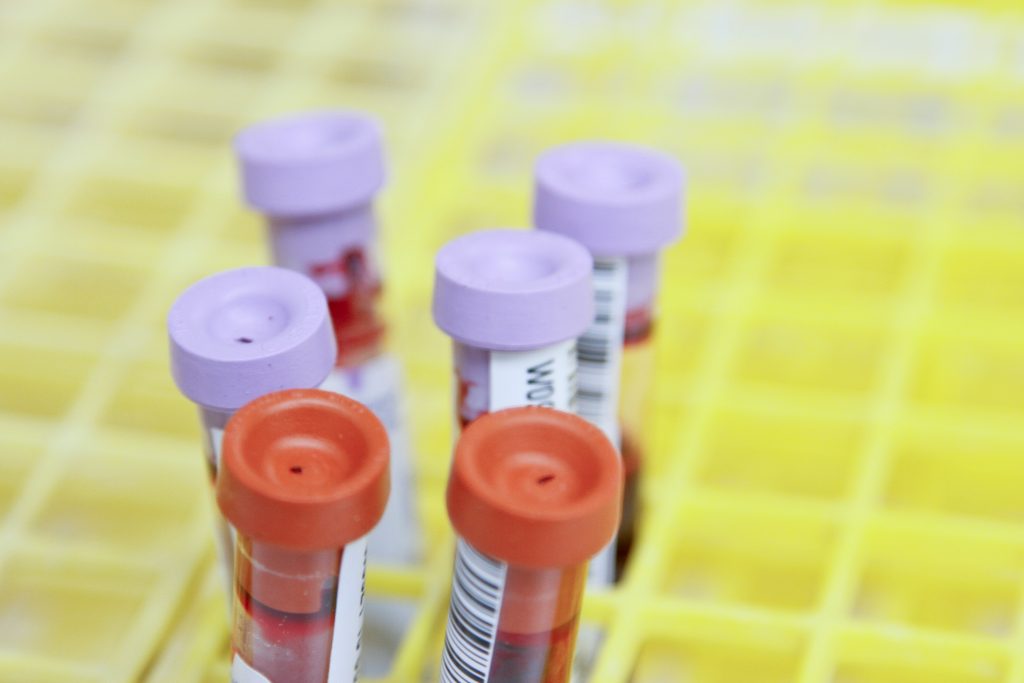
Roughly 280 million individuals worldwide undergo with melancholy (IHME, 2019), a situation related to important particular person and societal burden. Despair is twice as widespread in ladies (Malhi & Mann, 2018; WHO, 2023) and sometimes first manifests in adolescence (IHME, 2019; Kessler et al., 2007). At such a formative time melancholy can affect college attendance and academic attainment, contribute to substance abuse initiation (MHFA, 2020; Thapar et al., 2012), and is a number one reason for loss of life by suicide on this age group (WHO, 2021). Despair can be related to larger danger of future bodily well being issues akin to weight problems and heart problems (Blasco et al., 2020; Inoue et al., 2020).
Regardless of improved therapy availability the inhabitants prevalence of melancholy has not decreased (Ormel et al., 2022) and there are stark variations within the availability of therapy in high-income vs. low- and middle-income international locations (Evans-Lacko et al., 2018; Mekonen et al., 2021).
New methods are wanted to determine and deal with melancholy early. Understanding underlying organic mechanisms is one strategy and there’s a rising physique of proof for systemic irritation as a potential contributing mechanism (Köhler et al., 2017; Milaneschi et al., 2021; Valkanova et al., 2013). Researchers at King’s School London have noticed sex-specific variations in two inflammatory markers related to high-risk of creating melancholy, in a cohort of Brazilian adolescents (Zajkowska et al., 2023).

Despair is a prevalent world well being downside that usually first manifests in adolescence.
Strategies
Adolescents (14-16 years) had been recruited from colleges in Porto Alegre, Brazil, and had been break up into three equal teams (whole n=150) with a 50:50 ratio of male:feminine individuals:
- Non-depressed low-risk
- Non-depressed high-risk
- Present main depressive dysfunction (MDD)
Excessive vs low-risk was outlined utilizing a longtime prediction rating (beforehand developed by the identical authors) that’s based mostly on summing a number of related sociodemographic danger elements like drug use, relationship with dad and mom and social isolation (Rocha et al., 2021). Despair was confirmed by the Affected person Well being Questionnaire-Adolescent model (PHQ-A). Despair severity was assessed by the Kids’s Temper and Emotions Questionnaire (MFQ-C). Inflammatory markers (interleukins: IL-2, IL-6, IL-8, IL-10, IL-12p70, IL-13; tumour necrosis issue/TNF-α, and interferon/IFN-γ) had been measured from serum blood samples (pg/mL).
The authors assessed imply variations between teams for every of the inflammatory markers. In addition they examined the correlations between these inflammatory markers and the individuals’ self-reported melancholy severity. Regression modelling methods had been then used to permit them to check whether or not intercourse adjustments or moderates the connection between related cytokines and melancholy severity.
Outcomes
Blood-based inflammatory markers
Total pattern (women and men)
- Within the total pattern, serum ranges of all inflammatory markers (aside from IL-13) gave the impression to be elevated within the high-risk and the MDD group as in comparison with the low-risk group.
- Nevertheless, these variations between teams weren’t statistically important (all p-values >0.05).
Break up by intercourse
- When teams had been break up by intercourse, the authors discovered proof of an interplay between melancholy danger group and organic intercourse for one inflammatory marker, IL-2.
- Particularly, IL-2 ranges had been discovered to be elevated within the high-risk group vs the low-risk however solely in younger males.
Relationship between blood-based inflammatory markers and melancholy severity
Total pattern (women and men)
- Within the total pattern, ranges of IL-2 and lL-6 had been strongly positively correlated with melancholy severity.
- There was some proof of a weaker correlation between different pro-inflammatory markers, specifically IL-12p70, IL-13, IL-8 and TNF-α, and better melancholy severity.
- However, two anti-inflammatory markers, IFN-γ and IL-10, gave the impression to be weakly negatively correlated with melancholy severity.
- These findings recommend that larger ranges of irritation within the blood are related to larger (self-reported) melancholy severity.
Break up by intercourse
- When teams had been break up by intercourse, there was proof of an interplay between intercourse and melancholy severity.
- Particularly, the correlation between IL-2 and melancholy severity noticed within the total pattern solely remained in younger males.
- This correlation was additionally stronger in comparison with that noticed within the total pattern.
- Apparently, the correlation between IL-6 and melancholy severity noticed within the total pattern remained solely in younger females and was once more stronger right here than within the total pattern.
Intercourse-specific moderation
- Outcomes from regression fashions mentioned above recommend that severity of melancholy is partially moderated by IL-2, the place the variation in melancholy severity defined by IL-2 was 3.4% (p=0.022). Which means that the remaining 96.6% of the variation is defined by different elements.
- As compared, a a lot smaller quantity of the variation in melancholy severity was defined by IL-6 (0.6%; p=0.337), suggesting no moderation for this immune marker.
- In younger males, there was a optimistic relationship between melancholy severity with IL-2 and IL-6, nevertheless, this was solely important for IL-2 (p=0.004).
- Conversely, in younger females, analyses confirmed a major optimistic relationship between melancholy severity and IL-6 (p=0.008) whereas the connection with IL-2 was unfavorable and never important (p=0.671).
- Total, these findings recommend that totally different inflammatory cytokines contribute to melancholy severity in younger males in comparison with younger females.

Irritation is related to melancholy danger and severity, however the particular immune proteins answerable for the connection probably differs between sexes.
Conclusions
These findings recommend that the inflammatory cytokines IL-2 and IL-6 are related to each the danger of creating melancholy, and with the severity of melancholy one experiences. This relationship is modified by intercourse whereby the authors conclude that:
IL-2 might enhance danger for melancholy and severity of depressive signs in boys, however not in women. Nevertheless, IL-6 might enhance danger for extra extreme depressive signs in women.

In younger males, the inflammatory cytokine IL-2 is related to larger melancholy danger and melancholy severity. Nevertheless, for younger females, IL-6 appears extra essential.
Strengths and limitations
Feminine intercourse and adolescent age are essential danger elements for melancholy, but these teams are underrepresented in analysis. This examine seeks to grasp potential organic variations underlying melancholy danger in these teams, in a low- and middle-income nation. As famous by the authors, it is a cross-sectional evaluation and due to this fact reverse-causality is a key limitation, which means it’s unknown whether or not irritation got here earlier than or is the results of the melancholy or sociodemographic risk-predicting elements.
A earlier publication detailing the composite danger rating (used to separate individuals into teams) advised that this methodology has good predictive potential in a Brazilian adolescent inhabitants (C-statistic 0.76–0.79) (Rocha et al., 2021) and that the pattern on this examine is comparable with the Pelotas cohort wherein the predictive mannequin was developed (Kieling et al., 2021). Subsequently, the danger of misclassifying teams is decreased. Moreover, the evaluation of melancholy presence and severity was supported by two broadly used, validated questionnaires. It’s price noting, nevertheless, that prediction is just not excellent (for context a C-statistic of 0.50 represents random concordance (Pencina & D’Agostino, 2015)). So, some people should be incorrectly recognized as excessive or low danger.
The authors use acceptable statistical methods, report their strategies clearly and regulate for a number of testing. There are a selection of exclusion standards (e.g., low IQ, concomitant situations and use of psychotropic or anti-inflammatory treatment) and thus these elements can’t be influencing the associations noticed. Nevertheless, this additionally means the outcomes aren’t generalisable to people with these elements.
Baseline traits are reported in a separate paper (Kieling et al., 2021). BMI is analogous between teams together with the time of day at which blood samples had been taken (an essential power as irritation displays circadian rhythmicity (Xu et al., 2021)). Nevertheless, analyses don’t seem like adjusted for confounding by sure prevalent danger elements of melancholy and irritation akin to alcohol consumption and smoking, and the distribution of those between teams is unclear. The 11 sociodemographic variables used as predictors of melancholy danger are, as could be anticipated, imbalanced between teams. Collectively these elements predict future melancholy, nevertheless, it’s tough to separate associations between inflammatory markers and these sociodemographic elements from the affiliation of curiosity (i.e., between inflammatory markers and melancholy danger/presence).

Feminine intercourse and adolescent age are essential danger elements for melancholy, but these teams are underrepresented in analysis. This examine properly addresses this pertinent situation however stays topic to widespread limitations of cross-sectional analysis.
Implications for apply
Regardless of an enchancment in therapy availability, the inhabitants prevalence of melancholy has not decreased (Ormel et al., 2022) and analysis means that in as much as 60% of adolescents present pharmacological therapies don’t work (Cuijpers et al., 2023; Howes et al., 2022). Moreover, ~75% of individuals dwelling in low- and middle-income international locations (LMICs) do not need entry to those therapies (Evans-Lacko et al., 2018).
Understanding organic mechanisms underlying the event of melancholy is one strategy to figuring out novel early markers and therapy targets. This examine is in step with present analysis which has proven associations between inflammatory proteins and present melancholy (Köhler et al., 2017). Moreover, this examine exhibits that inflammatory cytokines could also be elevated in adolescents who’re liable to (however not at the moment presenting with) melancholy. The medical implication of that is that irritation is a potential goal for the early identification and prevention of melancholy, particularly contemplating the truth that inflammatory cytokines might be simply and affordably measured in blood. Importantly, this analysis additionally highlights variations between depression-related irritation in younger women and men, suggesting that totally different approaches could also be wanted per intercourse in medical apply.
One strategy to scale back inflammatory cytokine ranges is with anti-inflammatory treatment (Vöckel et al., 2024). Certainly, medicine which scale back IL-2 and IL-6 exist already for different situations, like rheumatoid arthritis, and these are potential candidates for drug repurposing. Nevertheless, this is able to depend on profitable randomised managed trials to exhibit security, efficacy and a beneficial danger/profit profile, in addition to on the provision of those medicine. Pharmacotherapy is just not the one technique and it could be pertinent to contemplate inflammation-reducing methods that are more cost effective to the well being service and extra possible to implement in an LMIC setting, akin to eating regimen and train.
Within the wider context, irritation is simply a part of the image; explaining a part of the variation in total melancholy danger. Consequently, lowering IL-2 and IL-6 might not meaningfully scale back the danger of, or efficiently deal with melancholy, in all individuals. Outcomes of a current meta-analysis help the sub-grouping of people into infected and non-inflamed melancholy teams which is a promising strategic course and needs to be thought of earlier than the applying of inflammatory therapy in psychiatric contexts (Osimo et al., 2019).

Inflammatory markers are simply measured in blood and methods that scale back irritation might show helpful in lowering melancholy danger and severity. However, a distinct strategy could also be wanted for females in comparison with males, and you will need to do not forget that irritation is simply a part of the image.
Assertion of pursuits
Sophie Fairweather is a PhD pupil on the College of Bristol, funded by the Nationwide Institute for Well being and Care Analysis (NIHR) Bristol Biomedical Analysis Centre (BRC) (NIHR, BRC). Her analysis pursuits are in danger prediction of melancholy and anxiousness, immunopsychiatry and sub-populations with allergic situations. She has no conflicts of curiosity to report.
Hyperlinks
Main paper
Zajkowska, Z., Nikkheslat, N., Manfro, P. H., Souza, L., Rohrsetzer, F., Viduani, A., Pereira, R., Piccin, J., Zonca, V., Walsh, A. E. L., Gullett, N., Fisher, H. L., Swartz, J. R., Kohrt, B. A., Kieling, C., & Mondelli, V. (2023). Intercourse-specific inflammatory markers of danger and presence of melancholy in adolescents. J Have an effect on Disord, 342, 69-75. https://doi.org/10.1016/j.jad.2023.07.055
Different references
Blasco, B. V., García-Jiménez, J., Bodoano, I., & Gutiérrez-Rojas, L. (2020). Weight problems and Despair: Its Prevalence and Affect as a Prognostic Issue: A Systematic Evaluation. Psychiatry Investig, 17(8), 715-724. https://doi.org/10.30773/pi.2020.0099
Cuijpers, P., Karyotaki, E., Ciharova, M., Miguel, C., Noma, H., Stikkelbroek, Y., Weisz, J. R., & Furukawa, T. A. (2023). The consequences of psychological therapies of melancholy in youngsters and adolescents on response, dependable change, and deterioration: a scientific assessment and meta-analysis. European Little one & Adolescent Psychiatry, 32(1), 177-192. https://doi.org/10.1007/s00787-021-01884-6
Evans-Lacko, S., Aguilar-Gaxiola, S., Al-Hamzawi, A., Alonso, J., Benjet, C., Bruffaerts, R., Chiu, W. T., Florescu, S., de Girolamo, G., Gureje, O., Haro, J. M., He, Y., Hu, C., Karam, E. G., Kawakami, N., Lee, S., Lund, C., Kovess-Masfety, V., Levinson, D., . . . Thornicroft, G. (2018). Socio-economic variations within the psychological well being therapy hole for individuals with anxiousness, temper, and substance use problems: outcomes from the WHO World Psychological Well being (WMH) surveys. Psychol Med, 48(9), 1560-1571. https://doi.org/10.1017/s0033291717003336
Howes, O. D., Thase, M. E., & Pillinger, T. (2022). Therapy resistance in psychiatry: state-of-the-art and new instructions. Mol Psychiatry, 27(1), 58-72. https://doi.org/10.1038/s41380-021-01200-3
IHME. (2019). Institute of Well being Metrics and Analysis. World Well being Information Change (GHDx). World Burden of Illness (GBD) examine. https://vizhub.healthdata.org/gbd-results/
Inoue, Ok., Beekley, J., Goto, A., Jeon, C. Y., & Ritz, B. R. (2020). Despair and heart problems occasions amongst sufferers with sort 2 diabetes: A scientific assessment and meta-analysis with bias evaluation. J Diabetes Problems, 34(12), 107710. https://doi.org/10.1016/j.jdiacomp.2020.107710
Kessler, R. C., Amminger, G. P., Aguilar-Gaxiola, S., Alonso, J., Lee, S., & Ustün, T. B. (2007). Age of onset of psychological problems: a assessment of current literature. Curr Opin Psychiatry, 20(4), 359-364. https://doi.org/10.1097/YCO.0b013e32816ebc8c
Kieling, C., Buchweitz, C., Caye, A., Manfro, P., Pereira, R., Viduani, A., Anés, M., Battel, L., Benetti, S., Fisher, H. L., Karmacharya, R., Kohrt, B. A., Martini, T., Petresco, S., Piccin, J., Rocha, T., Rohde, L. A., Rohrsetzer, F., Souza, L., . . . Mondelli, V. (2021). The Figuring out Despair Early in Adolescence Danger Stratified Cohort (IDEA-RiSCo): Rationale, Strategies, and Baseline Traits [Original Research]. Frontiers in Psychiatry, 12. https://doi.org/10.3389/fpsyt.2021.697144
Köhler, C. A., Freitas, T. H., Maes, M., de Andrade, N. Q., Liu, C. S., Fernandes, B. S., Stubbs, B., Solmi, M., Veronese, N., Herrmann, N., Raison, C. L., Miller, B. J., Lanctôt, Ok. L., & Carvalho, A. F. (2017). Peripheral cytokine and chemokine alterations in melancholy: a meta-analysis of 82 research. Acta Psychiatr Scand, 135(5), 373-387. https://doi.org/10.1111/acps.12698
Malhi, G. S., & Mann, J. J. (2018). Despair. The Lancet, 392(10161), 2299-2312. https://doi.org/https://doi.org/10.1016/S0140-6736(18)31948-2
Mekonen, T., Chan, G. C. Ok., Connor, J. P., Hides, L., & Leung, J. (2021). Estimating the worldwide therapy charges for melancholy: A scientific assessment and meta-analysis. Journal of Affective Issues, 295, 1234-1242. https://doi.org/https://doi.org/10.1016/j.jad.2021.09.038
MHFA. (2020). MHFA England: Psychological well being statistics. https://mhfaengland.org/mhfa-centre/research-and-evaluation/mental-health-statistics/#statistics-packs
Milaneschi, Y., Kappelmann, N., Ye, Z., Lamers, F., Moser, S., Jones, P. B., Burgess, S., Penninx, B., & Khandaker, G. M. (2021). Affiliation of irritation with melancholy and anxiousness: proof for symptom-specificity and potential causality from UK Biobank and NESDA cohorts. Mol Psychiatry, 26(12), 7393-7402. https://doi.org/10.1038/s41380-021-01188-w
Ormel, J., Hollon, S. D., Kessler, R. C., Cuijpers, P., & Monroe, S. M. (2022). Extra therapy however no much less melancholy: The treatment-prevalence paradox. Medical Psychology Evaluation, 91, 102111. https://doi.org/https://doi.org/10.1016/j.cpr.2021.102111
Osimo, E. F., Baxter, L. J., Lewis, G., Jones, P. B., & Khandaker, G. M. (2019). Prevalence of low-grade irritation in melancholy: a scientific assessment and meta-analysis of CRP ranges. Psychol Med, 49(12), 1958-1970. https://doi.org/10.1017/s0033291719001454
Pencina, M. J., & D’Agostino, R. B., Sr. (2015). Evaluating Discrimination of Danger Prediction Fashions: The C Statistic. Jama, 314(10), 1063-1064. https://doi.org/10.1001/jama.2015.11082
Rocha, T. B.-M., Fisher, H. L., Caye, A., Anselmi, L., Arseneault, L., Barros, F. C., Caspi, A., Danese, A., Gonçalves, H., Harrington, H. L., Houts, R., Menezes, A. M. B., Moffitt, T. E., Mondelli, V., Poulton, R., Rohde, L. A., Wehrmeister, F., & Kieling, C. (2021). Figuring out Adolescents at Danger for Despair: A Prediction Rating Efficiency in Cohorts Primarily based in 3 Completely different Continents. Journal of the American Academy of Little one & Adolescent Psychiatry, 60(2), 262-273. https://doi.org/10.1016/j.jaac.2019.12.004
Thapar, A., Collishaw, S., Pine, D. S., & Thapar, A. Ok. (2012). Despair in adolescence. The Lancet, 379(9820), 1056-1067. https://doi.org/https://doi.org/10.1016/S0140-6736(11)60871-4
Valkanova, V., Ebmeier, Ok. P., & Allan, C. L. (2013). CRP, IL-6 and melancholy: a scientific assessment and meta-analysis of longitudinal research. J Have an effect on Disord, 150(3), 736-744. https://doi.org/10.1016/j.jad.2013.06.004
Vöckel, J., Markser, A., Wege, L., Wunram, H. L., Sigrist, C., & Koenig, J. (2024). Pharmacological anti-inflammatory therapy in youngsters and adolescents with depressive signs: A scientific-review and meta-analysis. European Neuropsychopharmacology, 78, 16-29. https://doi.org/https://doi.org/10.1016/j.euroneuro.2023.09.006
WHO. (2021). World Well being Group (WHO): Psychological well being of adolescents. https://www.who.int/news-room/fact-sheets/element/adolescent-mental-health
WHO. (2023). World Well being Group: Truth sheets: Depressive dysfunction (melancholy). https://www.who.int/news-room/fact-sheets/element/melancholy
Xu, H., Huang, L., Zhao, J., Chen, S., Liu, J., & Li, G. (2021). The circadian clock and irritation: A brand new perception. Clinica Chimica Acta, 512, 12-17. https://doi.org/https://doi.org/10.1016/j.cca.2020.11.011
Zajkowska, Z., Nikkheslat, N., Manfro, P. H., Souza, L., Rohrsetzer, F., Viduani, A., Pereira, R., Piccin, J., Zonca, V., Walsh, A. E. L., Gullett, N., Fisher, H. L., Swartz, J. R., Kohrt, B. A., Kieling, C., & Mondelli, V. (2023). Intercourse-specific inflammatory markers of danger and presence of melancholy in adolescents. J Have an effect on Disord, 342, 69-75. https://doi.org/10.1016/j.jad.2023.07.055


